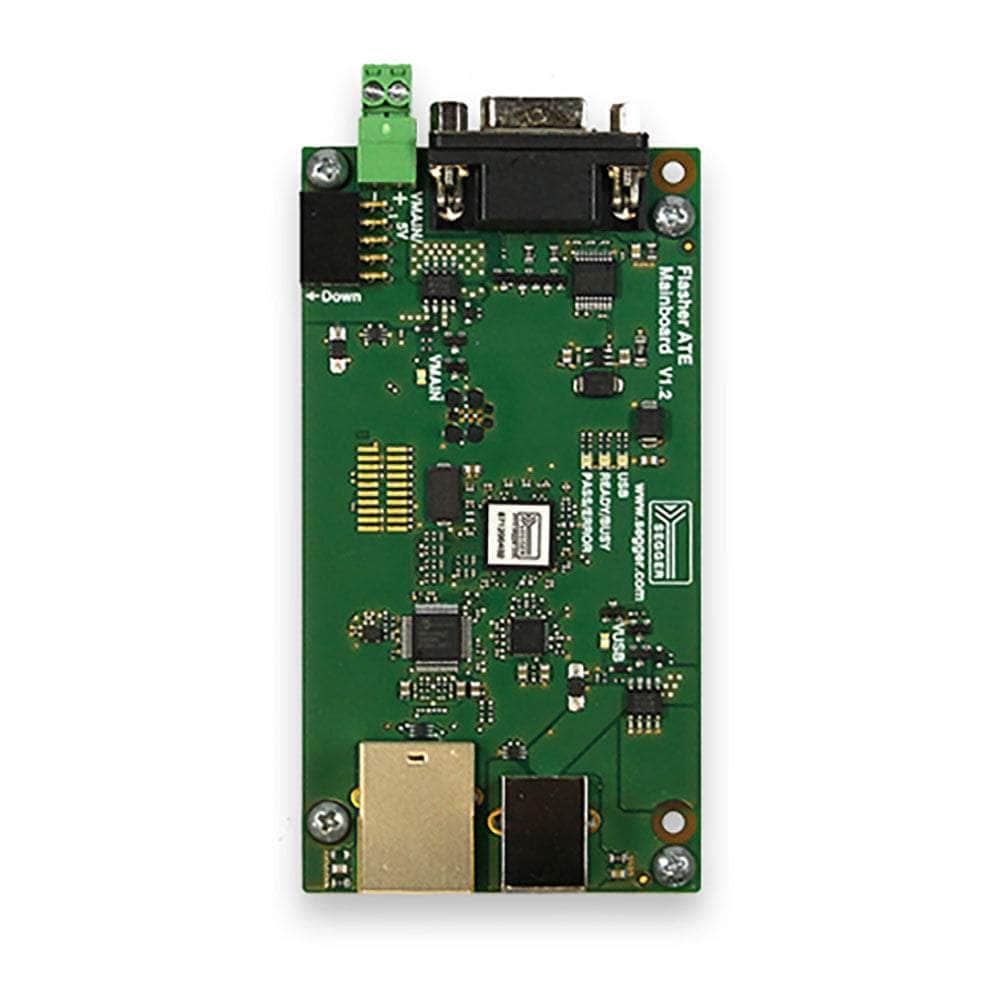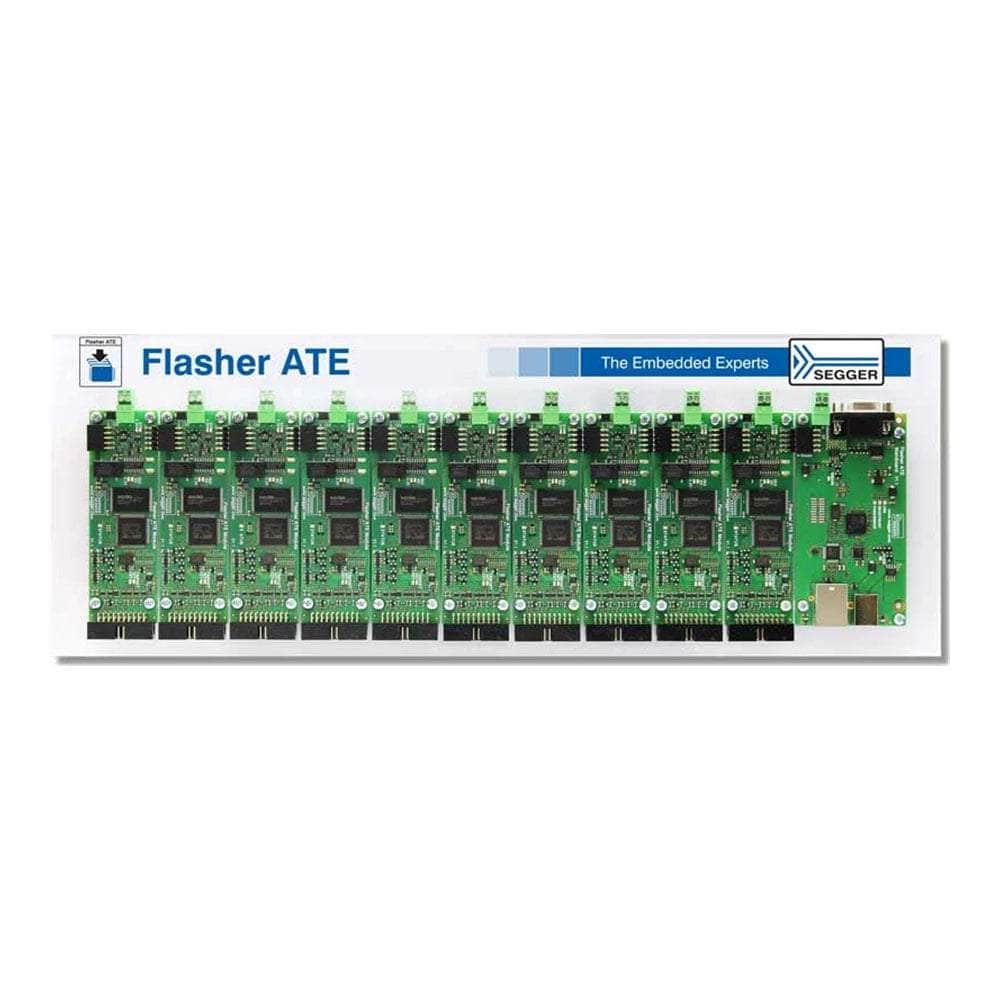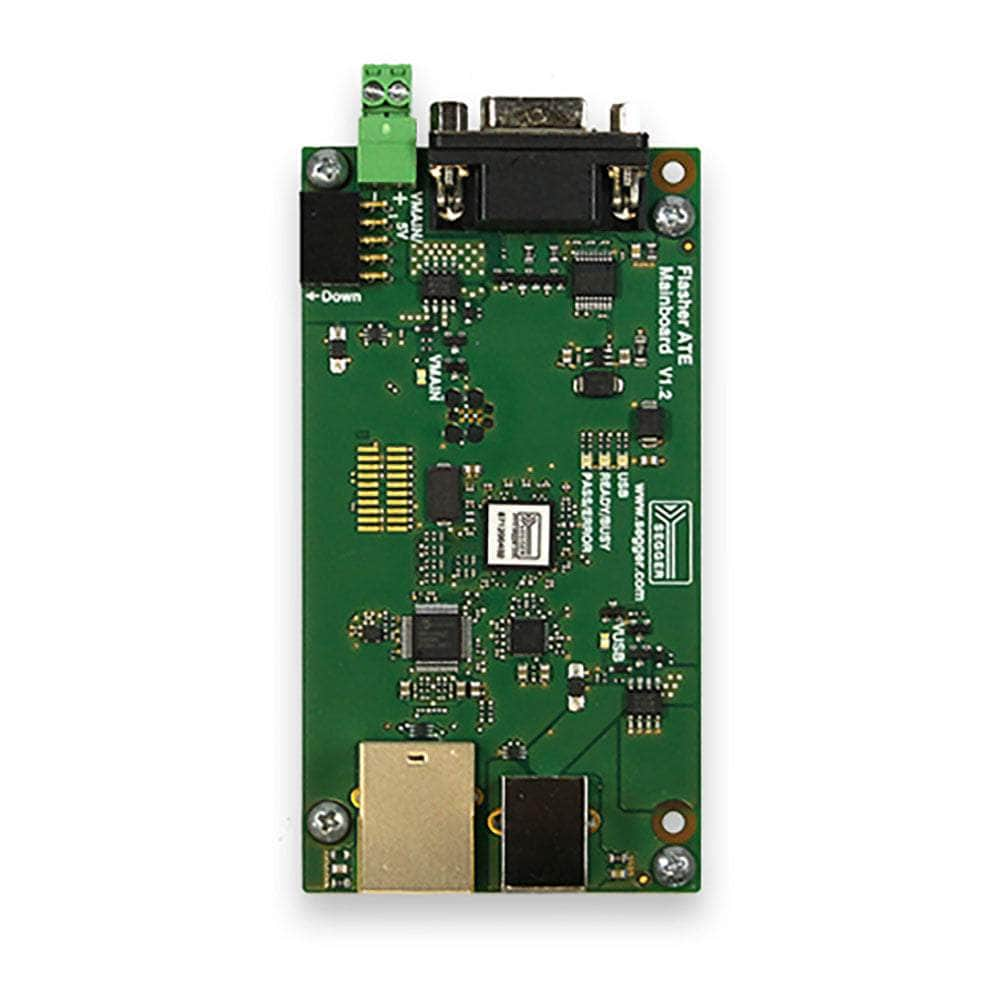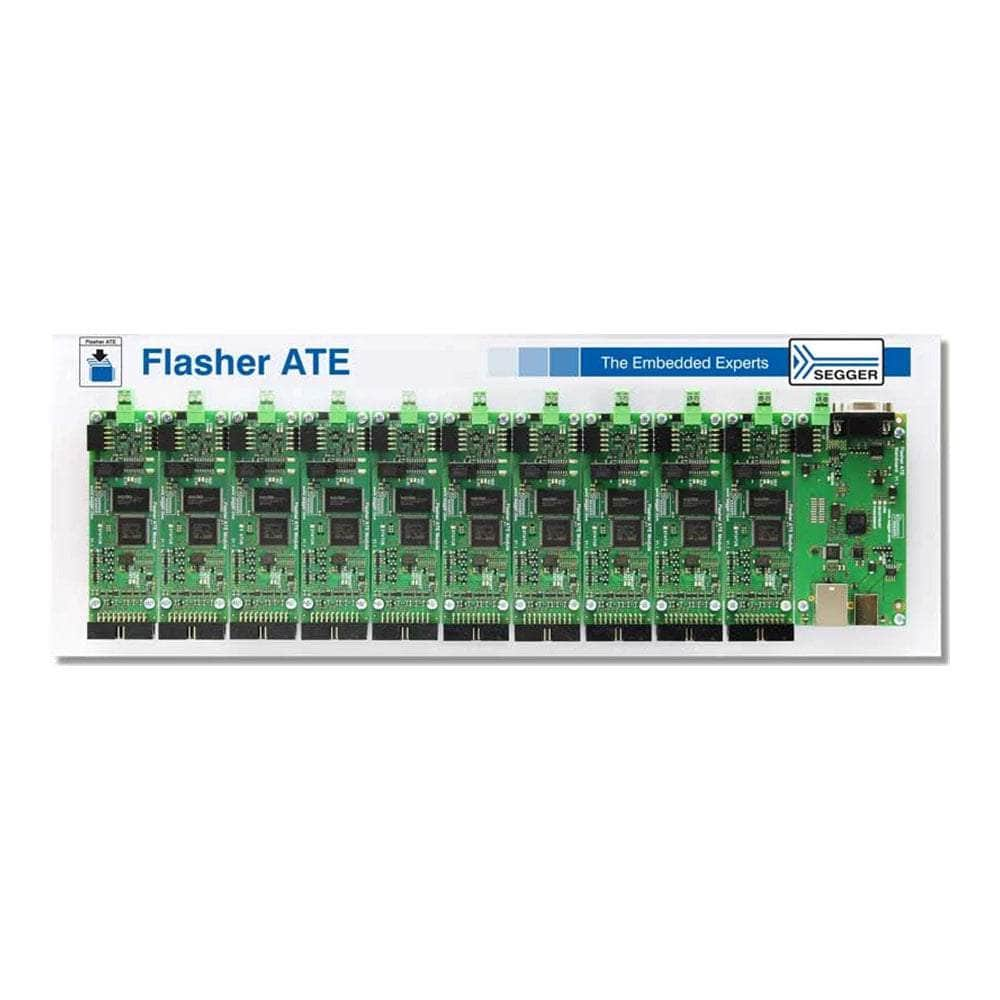

Key Features
Overview
The SEGGER Flasher ATE Main Module serves as the central communication hub for high-volume automated flash programming operations. This modular mainboard coordinates commands between automated test equipment (ATE) systems and up to 10 individual programming modules, enabling simultaneous programming of multiple target devices with proven SEGGER flash algorithms.
Built for industrial production environments, the main module features multiple communication interfaces including Ethernet (10/100 Mbit), USB 2.0, and RS232, allowing seamless integration into existing production workflows. Each programming operation utilises the same market-leading algorithms found in SEGGER J-Link debug probes and Flasher programming devices.
The system supports both remote-controlled operation via PC commands and standalone handshake mode for direct ATE integration. With 128MB memory per module and integrated FTP/web servers, configuration management and monitoring become straightforward in production environments. Compatible with ARM Cortex, AVR, MSP430, PIC, RL78, RX, STM8 and other major microcontroller families through various programming adapters.
Downloads
Why Engineers Choose The Module principal SEGGER Flasher ATE
Production Scalability
ATE Integration
Proven Reliability
Présentation du module principal Flasher ATE - Votre solution de programmation Flash ultime
Améliorez votre expérience de programmation Flash avec le module principal révolutionnaire Flasher ATE de SEGGER. Conçu pour répondre aux besoins des environnements de production de masse à volume élevé, Flasher ATE est le programmateur Flasher modulaire qui fera passer votre productivité au niveau supérieur.
Programmation Flash à grande vitesse et à haut volume
Avec Flasher ATE, vous pouvez programmer jusqu'à 10 appareils cibles simultanément, grâce à ses multiples modules de programmation. Dites adieu à la programmation chronophage et individuelle : découvrez la rapidité et l'efficacité de Flasher ATE.
Alimenté par une technologie de pointe
Le cœur du Flasher ATE réside dans sa carte de communication principale, qui s'intègre parfaitement à un ATE (Automated Test Equipment), ICT (In-Circuit Test) ou à un système de gestion de production automatisé similaire. Cette carte intelligente distribue efficacement les commandes, assurant une communication fluide avec les modules de programmation, et garantit les mêmes algorithmes de pointe que ceux des sondes de débogage J-Link et des dispositifs de programmation Flasher de SEGGER.
Support et licences MCU inégalés
Lorsque vous choisissez Flasher ATE, vous n'obtenez pas seulement un outil de programmation Flash, mais l'accès à un écosystème complet. Nous proposons des licences de programmation avec tous les microcontrôleurs pris en charge, vous offrant ainsi la liberté de travailler avec différents cœurs de processeur et une gamme diversifiée de périphériques Flash SPI.
Découvrez la différence
Améliorez votre programmation Flash avec Flasher ATE. Sa vitesse, sa polyvalence et ses algorithmes fiables révolutionneront votre processus de production. Passez à Flasher ATE et découvrez la puissance d'une programmation Flash fluide et rapide.
Frequently Asked Questions
Have a Question?
-
Is the Flasher ATE Main Module compatible with existing SEGGER software?
Yes, the system works with J-Flash software for project configuration and the Universal Flash Loader Configurator. Setup files created in J-Flash can be directly uploaded to the modules via FTP for production use.
-
What programming speeds can be achieved with the Flasher ATE system?
Programming speeds reach up to 300 KBytes/second depending on target hardware, interface type, and JTAG clock frequency. The modular approach enables parallel programming to multiply effective throughput.
-
How does the Main Module integrate with existing ATE systems?
Integration occurs through the RS232 handshake interface (pins 1, 4, 5, 7) for simple start/stop control, or via Ethernet/RS232 ASCII command interface for advanced remote control with detailed status reporting and error handling.
-
What power supply options are available for the Main Module?
The Main Module can be powered via USB (for basic operation) or external 5V DC supply via the VMAIN connector (recommended for full 10-module configurations). Maximum power consumption is 3A when using all 10 modules.
-
Can I mix different target types across the programming modules?
Yes, each programming module can be configured independently with different firmware images, configuration files, and target settings, allowing simultaneous programming of various microcontroller types in mixed production scenarios.
-
What communication interfaces are available on the Main Module?
The Main Module provides 10/100 Mbit Ethernet, USB 2.0 High-Speed, and RS232 9-pin interfaces for host communication, plus individual module control via the internal ATE bus system.
-
How do I upload firmware and configuration files to the Main Module?
Files are transferred using the integrated FTP server accessible via Ethernet connection. Each programming module appears as a separate folder (Module.001, Module.002, etc.) where configuration (.CFG) and data (.DAT) files are stored.
-
What microcontroller families are supported by the Flasher ATE system?
The system supports ARM Cortex-M, ARM7/9/11, AVR, MSP430, PowerPC e200z0, PIC, RL78, RX, STM8, and 8051 cores through various programming interfaces including JTAG, SWD, SWIM, PDI, ICSP, and SPI.
-
Can the Flasher ATE Main Module operate without a PC connection?
Yes, the Main Module supports standalone handshake mode where programming is triggered directly by ATE control signals via the RS232 connector. Once configured, it operates autonomously without requiring a host PC connection.
-
What is the difference between the Flasher ATE Main Module and the newer Flasher ATE2?
The Main Module is part of the original modular Flasher ATE system requiring separate programming modules, whilst the ATE2 is a single-board solution with 8 integrated programming channels. The Main Module offers greater scalability (up to 10 modules vs 8 channels) and modular flexibility for custom production setups.


